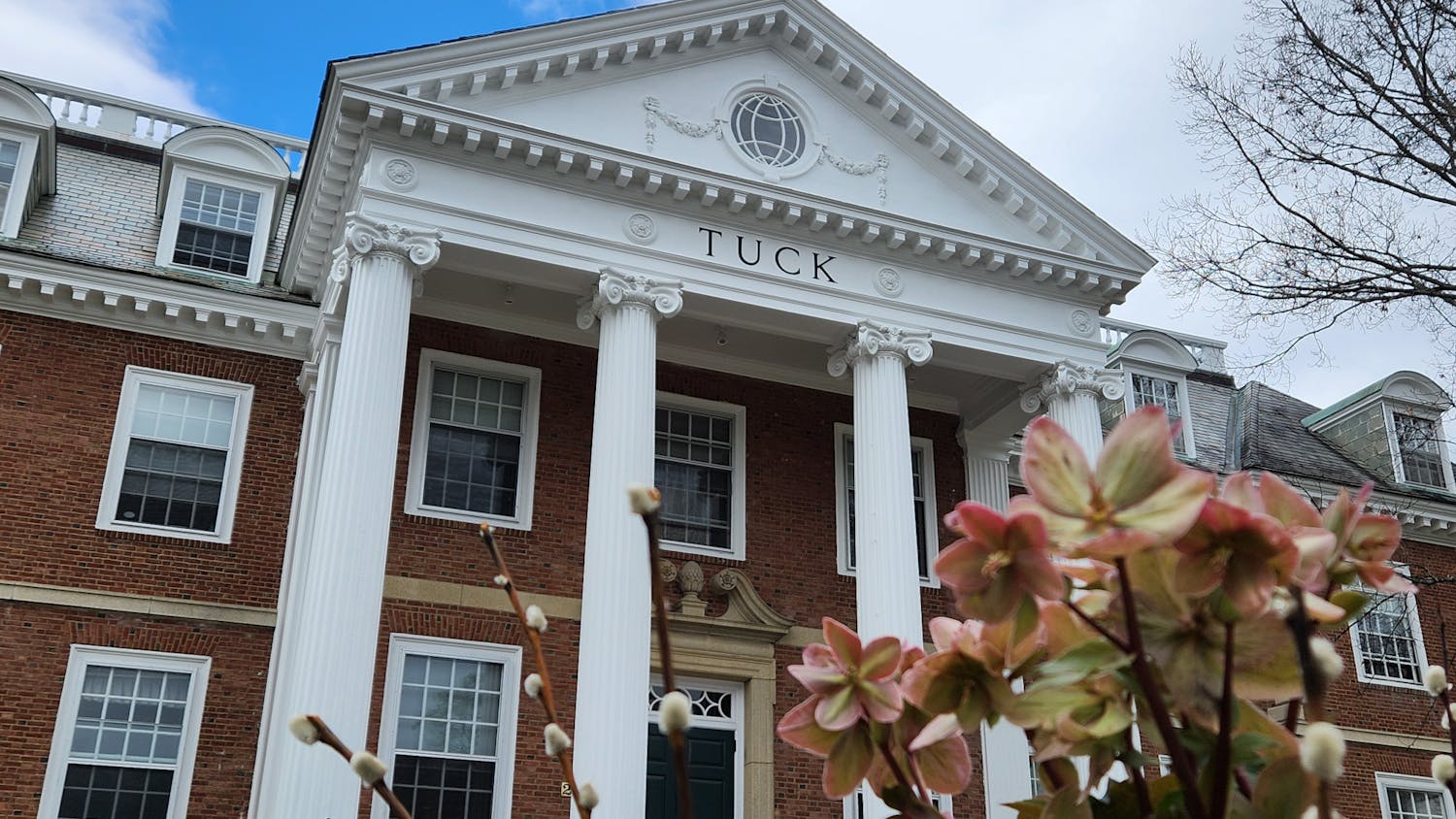Michael Sateia is an emeritus psychiatry professor at the Geisel School of Medicine, focusing on sleep. He was the director of the Dartmouth-Hitchcock Sleep Disorder Center for about 35 years. He is also an adjunct professor in the College’s Psychology department for the past 20 years, teaching an annual course on sleep and sleep disorders. Sateia graduated from Dartmouth in 1970, majoring in biopsychology — today known as neuroscience.
So generally in your class how would you introduce the idea of dreaming and what we know about the purpose that might serve?
MS: We talk about the physiology of dreaming, meaning how dreams are generated. That’s still a relatively controversial area, but dreams are not exclusive to — but are certainly strongly connected to — rapid eye movement or REM sleep. And then we get into the weeds as it were, discussing sort of what the meaning of dreams is, if there is a meaning of dreams, and if so what is their significance. Some theories suggest that dreams are no more than a kind of random electrical bombardment of the brain. Others see much more meaning in dream activity. Of course one can go back to Sigmund Freud who thought there was a great deal of meaning in dream activity, but there are also more modern theories about the significance of dreams. For example, one of the theories that we discuss is dreams as a kind of threat rehearsal; that we rehearse threats to improve our adaptive response to them.
There was an interesting piece that my wife just posted on Facebook for me this week from The Washington Post about academic anxiety in dreams. And in fact I tell the students about this because certainly it’s very familiar to me personally, which is dreaming that you suddenly find yourself sitting in a final exam and you realize that you’ve forgotten that you’re taking the course and you’ve done nothing and you’ve gone to no classes. But that’s an example of what might be threat rehearsal, you know, our brain sort of telling us that we need to keep our nose to the grindstone academically to be properly prepared. And other people dream about other threats, you know, being chased or assaulted or something like that.
And then sometimes dreams go awry and become nightmares, which essentially are dreams that produce intense anxiety and typically are threatening in nature. And some people tend to be nightmare sufferers just by nature, but a lot of what we see, and certainly this is true clinically, are post-traumatic nightmares. So in combat veterans and individuals, particularly women but not limited to women, sexual assault often is accompanied by nightmares in which the threat is revisited or at least the emotion connected to that is revisited, and that of course is a huge problem in the post-traumatic stress sufferers. And this is a not uncommon problem. The nightmare problems and the associated sleep disturbances are often one of the primary complaints that they have with the disorder.
One thing that I’ve always been interested in is sleepwalking and night terrors — when there’s a physical component to the dream. Is there a clinical cause for that?
MS: Well, actually, sleep walking and terrors come out of a different state of sleep. They come out of deep, non-REM sleep, what we call NIII or non-REM stage III sleep. And they’re actually quite distinct from nightmares which are mostly in REM and these are usually not accompanied by extensive dream activity. You know, if you ask people who’ve been sleepwalking or who have had a sleep terror what they were thinking or dreaming about you usually don’t get a very extensive report. There might be a fixed threatening image but not the elaborate, sequential, bizarre dream activity that we get out of REM sleep. And there is a strong biological component to this. They’re disorders that are highly hereditary in nature. We don’t know exactly what’s being transmitted genetically but clearly there’s a strong predisposition that is transmitted genetically. So if you have a parent who has a history of frequent sleep walking or terrors your chances as a child of having that go way up. And if you have both parents who have a history of sleepwalking or terrors you have a pretty high probability as a child that you’re going to be affected as well.
Some people I’ve talked to say that they never remember their dreams — why is that? Is it true that everybody does dream?
MS: Yes, everybody dreams. And you know, if we put those people in the lab and we recorded their sleep and we woke them out of a REM sleep period and asked them what was going on in their mind, they are with very high frequency, probably 80 to 90 percent likely to report a dream. The reason why people say they don’t dream is typically two things. One, they’re usually pretty sound sleepers, so they don’t often wake up in association with ongoing dream activity. And they also often don’t pay very much attention to that so when they’re waking in the morning, they don’t think about whether they were dreaming. And dreams are lost very quickly upon awakening. And so if you don’t awaken within a short period of time, you know, we’re talking 5 to 10 minutes perhaps of dream activity, and sort of think about what was going on in your mind, then your experience is going to be that you don’t dream. But they do.
So if every day when you wake up you try to think about your dream, does that at all affect how well you will be able to recall future dreams?
MS: Oh yeah, people sort of train themselves. I mean there are people who keep dream journals, and the more you focus on your dream activity, the more likely you are to recall dreams and sort of experience a much richer dream life, as it were. And in fact there also is this phenomenon of lucid dreaming in which people can actually train themselves to develop conscious awareness during dreams, and are actually able to manipulate the content of dreaming during sleep.
I had heard people talk about lucid dreaming, but I wasn’t sure if it was actually a real thing.
MS: Yeah, it’s real, and you could sort of say, well how do we know it’s real? I mean maybe these people are just making up stuff. And in fact there is a well-recognized signal that’s going on in the laboratory when you record lucid dreamers, and you can prearrange a signal which would be — well, we’re paralyzed during REM sleep but we maintain our eye movements and respiratory activity — so you can’t tell them to raise their arm when they’re in a dream to signal but you can tell them to look right three times and look left three times and look right three times. And you can see that happen on the Polysomnogram, because we record eye movement activity along with brainwaves and a lot of other stuff. And so these people, you can see them go into REM and you can see this boom, boom, boom, looking right three times, looking left three times, looking right three times. So clearly they are having some sort of conscious awareness and are able to signal, you know, I’m in REM right now and yet I’m consciously aware.
You clearly have had many experiences with patients who have had sleep disorders, and I was wondering if there was a disorder or condition that you have found most interesting to work with over the course of your career?
MS: Our day usually consists of at least 75 or 80 percent dealing with people with sleep apnea. Some of the behavioral disturbances in sleep like REM behavior disorder where people start acting out their dreams is very fascinating. And also narcolepsy, which is a disorder of excessive sleepiness that is accompanied by episodes of sudden muscle paralysis that are triggered by motion like laughter, that’s also very interesting.
And particularly interesting because in the last decade and a half or so we’ve come to understand the exact cause of narcolepsy. It turns out there’s a group of brain cells that are destroyed and they’re destroyed almost certainly because of an autoimmune disorder, and that’s when the body’s immune system starts attacking its own cells, things like lupus and rheumatoid arthritis those are all autoimmune disease, in this case the target of the immune response is this cluster of nerve cells in the hypothalamus in the center of the brain. And it turns out that those brain cells are very important in regulating sleep-wake, and when you knock them out, they die and that becomes narcolepsy.
This interview has been edited and condensed for length and clarity.



